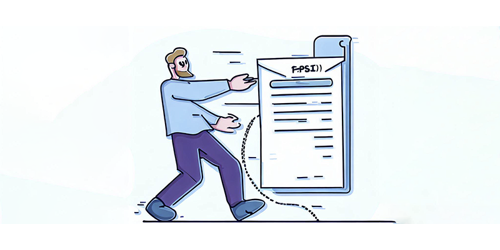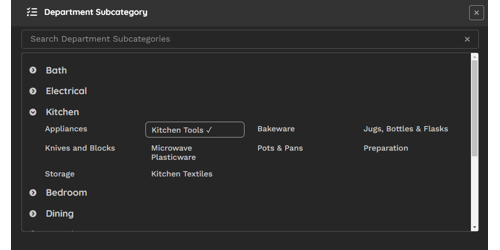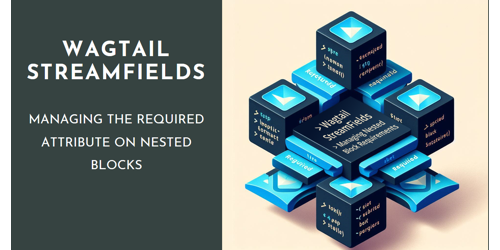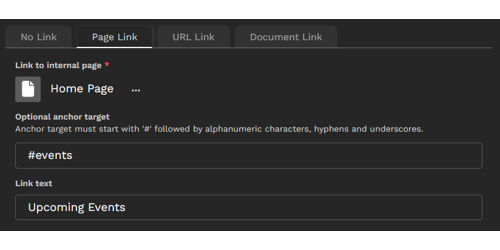Tech Blog
Here I'll be sharing insights from my professional experiences and studies in data science and web development. There'll be plenty of Wagtail, Django and Python, a bit of JavaScript and CSS thrown in, and more on data science & engineering. There might even be a bit of time for some project management and business analysis too.
I'll also provide insights into how this site was made, as well as code examples and thoughts on how those could be further developed.
Feel free to leave questions or comments at the bottom of each post - I just ask people to create an account to filter out the spammers. You won't receive any unsolicited communication or find your email sold to a marketing list.

Creating Wagtail Streamfield StructBlocks with a Customised Editor Interface
This article will take you through the process of creating custom Wagtail Streamfield StructBlocks. You will learn how to customize the editing interface with CSS and JavaScript to achieve responsive front-end behaviour.
I'll demonstrate the creation of a StructBlockAdapter and the registration of JavaScript using Telepath. Additionally, I'll give a real-world example, showing how to include a custom StructBlock as a component of a parent StructBlock.
I'll demonstrate the creation of a StructBlockAdapter and the registration of JavaScript using Telepath. Additionally, I'll give a real-world example, showing how to include a custom StructBlock as a component of a parent StructBlock.
2023-07-10 06:19:58 UTC

Creating Custom Django Form Widgets with Responsive Front-End Behaviour
This article will take you through the process of creating custom Django form widgets with responsive front-end behaviour. Create a custom Django template and learn how augment an existing widget with additional HTML and embedded JavaScript. For Wagtail users, learn how to seamlessly integrate your custom widget into FieldPanels and StructBlocks.
2023-09-16 03:51:11 UTC

Efficient Cascading Choices in Wagtail Admin: A Smart Chooser Panel Solution
In the Wagtail admin interface, handling cascading or dependent selections can be a challenge due to the absence of active controls. This tutorial unveils a practical solution by guiding you through the creation of a custom 'chooser' panel. This panel not only elegantly displays dependent elements grouped by their parent element, focusing on categories and subcategories, but also incorporates an intuitive partial match filter for swift and efficient selections.
Learn how to implement this custom chooser panel, providing a one-click method to effortlessly manage cascading selections, enhancing your Wagtail experience.
Learn how to implement this custom chooser panel, providing a one-click method to effortlessly manage cascading selections, enhancing your Wagtail experience.
2024-01-27 00:39:51 UTC

Wagtail Streamfields - Propagating the `required` Attribute on Nested Blocks
When adding blocks to a custom Wagtail StreamField StructBlock, whether or not those blocks are required may depend on the required status set in the StructBlock constructor kwargs.
Unlike Django form fields however, in Wagtail's Block class (from which all blocks derive), the required attribute is a read-only property. This means it can only be set in the class declaration rather than during instantiation.
This article presents a straightforward workaround, eliminating the necessity for extensive validation code in each affected block.
Unlike Django form fields however, in Wagtail's Block class (from which all blocks derive), the required attribute is a read-only property. This means it can only be set in the class declaration rather than during instantiation.
This article presents a straightforward workaround, eliminating the necessity for extensive validation code in each affected block.
2024-02-20 05:09:11 UTC

Build an Intuitive Link StructBlock in Wagtail: Simplifying Link Management for Content Editors
Learn how to create a reusable StructBlock in Wagtail that simplifies the management of different link types.
Develop an intuitive, compact, and interactive tabbed interface that empowers content editors to seamlessly select link type, path, and text, all while optimizing page space within the editing interface. Implement a common method to retrieve URL and text for the link regardless of link type, including custom link types.
We'll cover concepts essential for achieving our goal, such as transforming Django's radio select widget into a tab group, constructing an interactive panel interface within the StructBlock using a custom Telepath class, dynamically adding child blocks based on initial parameters, integrating data attributes into block forms, custom StructValue classes and designing adaptable choice blocks.
Develop an intuitive, compact, and interactive tabbed interface that empowers content editors to seamlessly select link type, path, and text, all while optimizing page space within the editing interface. Implement a common method to retrieve URL and text for the link regardless of link type, including custom link types.
We'll cover concepts essential for achieving our goal, such as transforming Django's radio select widget into a tab group, constructing an interactive panel interface within the StructBlock using a custom Telepath class, dynamically adding child blocks based on initial parameters, integrating data attributes into block forms, custom StructValue classes and designing adaptable choice blocks.
2024-03-09 00:14:43 UTC

Create a Wagtail Code Block with highlightjs
This article guides you through creating a custom Wagtail block designed to display code with automatic syntax highlighting, using the highlightjs library. It covers key elements such as extending Wagtail’s default block types, customising the admin interface with CSS, and dynamically loading external libraries as needed. The block provides editors with options to collapse code, display custom titles, and preview the formatted code directly in the Wagtail admin interface.
Additionally, the article discusses structuring the block’s back-end and front-end components, ensuring proper interaction between the block form and the highlightjs library. It also explains the importance of responsive design and efficient UI/UX choices, helping editors easily work with code blocks while maintaining multilingual compatibility.
Additionally, the article discusses structuring the block’s back-end and front-end components, ensuring proper interaction between the block form and the highlightjs library. It also explains the importance of responsive design and efficient UI/UX choices, helping editors easily work with code blocks while maintaining multilingual compatibility.
2024-10-24 03:35:17 UTC

Achieving Recursive Blocks in Wagtail Streamfield
It's not obvious from the Wagtail documentation that it is possible to build recursive blocks. Building on previous articles here, we can make use of the undocumented local_blocks attribute to build recursion into our streamfields. This article gives a working example using a simple file system analogy.
2025-10-02 00:22:23 UTC
